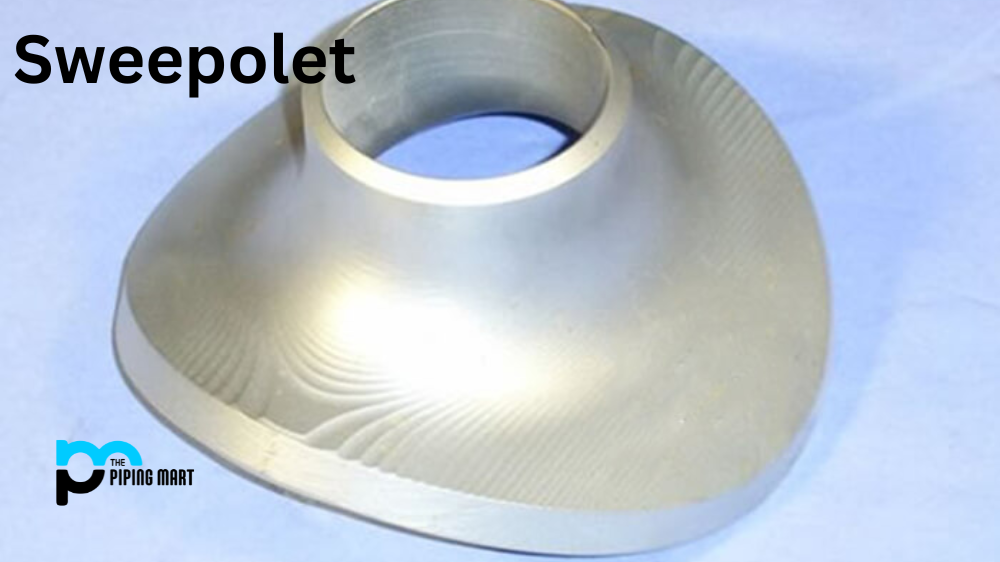What is meant by a Nail?
A nail is a tiny metal component that can be used as a fastener, a peg for hanging things, or even ornamentation. Everyone knows that using nails is a typical practice in construction and carpentry. Nails typically have a flattened head and a sharp tip at one end, but they are also accessible without a head. The most common nailing tools are a hammer and a pneumatic nail gun.
The nail’s main function is to hold the material together in an axial direction by friction and subsequent shearing force. After driving, the nail tip is occasionally also twisted or fastened to stop it from coming out. For specific uses, nails are produced in a wide range of configurations. The variety in nail form and shape makes it appropriate for particular uses.
What are the parts of a nail?
The three basic components of a nail are the point, which penetrates the workpieces. The shank, or shaft, holds the workpieces together and offers the bulk of the strength and holding power. And the head facilitates driving the fastener and aids in preventing the nail from pulling through the workpieces. These elements’ various nail designs give the nails a variety of functions and applications. Nails consist of the four components stated below:
Nail point:
The nail points are diamond-shaped, suitable for general use, and facilitate nail driving. Some nails are more difficult to drive but less prone to split the workpiece because of their blunt tips.
Head:
The head or the top of the nail is referred to as the head, and it is made to accommodate the pointed end so that it may be easily countered without slipping and piercing the wood. Although it produces a coarser finish than other types, a spherical head enables solid communication with the hammer. Round-headed nails are frequently used for general fastening and construction. The flathead is a rounded, large fish. They make driving the nail simpler and lessen the chance that the piece of work will pull through the head of the nail.
The raised design on checkered heads helps keep the hammer from slipping off the nail. Small counter-sinks and cupped heads drive below the surface of the workpiece to conceal the nail. These heads are frequently not much larger than the diameter of the shank. Nail holes can be readily filled with cupped heads for a smooth finish. Clipped heads are D-shaped heads that are relatively small and made for strip nailers. They make it possible to collate or unite the nails closely in a line. Different heads are used to make nails, each with unique properties. The shapes of several nail heads include round, counter-sunk, flat, checkered, clipped, etc.
Shank:
The majority of the holding is done by the nail shank. Even when put under a lot of strain, the nail shanks maintain the nails’ place. The wood fibers are forced against the shank and secured by a knot between them. A smooth shank is simple to drive but provides little resistance to pullout.
The nail is easy to drive and is kept in position by the thread or flute on the shank. The nail rotates as one drives it thanks to a spiral or screw shank, similar to the threads on a screw. As they are frequently made for use with hardwoods, spiral-shank nails have the potential to split softwoods. Screw nails are also referred to as nails with spiral shanks.
When working with softwoods, ring shanks or annular nails are frequently employed. The rings lock with wood fibers such as a spiral shank to offer high gripping strength. This pressure makes it challenging to get the nail out of the wood. Nails are typically manufactured from various nails, including those with smooth, spiral, ring, or annular shanks.
Nail coating:
The nails are not coated. However, some have a substance applied to the shank to lubricate it and increase driving effectiveness or holding force. When the nail is being made, a procedure known as galvanization is carried out, coating the nails in zinc to offer some corrosion protection.
What are the various types of nails and their Applications?
The primary categories of nails can be described as follows:
Common nails:
For normal construction, framing, and various other structural work, ordinary nails are utilized. They often have a broad head, thick legs, and point with a diamond form. They work well for fastening tasks in which nail strength is more important than aesthetics.
Regular nails typically have rounded heads. Thus this nail type is appropriate for jobs where performance is more crucial than appearance. In terms of strength, these heavy-duty nails work well for tough labor applications.
Framing nails:
Heavy-duty construction typically uses framing nails fired from a gun to secure wood to wood. In addition, these kinds of nails are employed in craft and construction tasks.
These nails have a pointed edge that drives motion into the material without fracturing, making them robust and long-lasting. It is typically lengthier and perfect for woodworking applications requiring a strong framework, such as framing buildings. Some framing nails are a little thinner, making them simpler to drive, keep flush, or even sink in for aesthetic purposes.
Box nails:
A box nail is similar to a standard nail but is applied to lighter pieces of wood and boxes because it has a narrower shank. By having a smaller shank diameter, one may have a lower possibility of splitting the wood when driving the nail.
To stop corrosion, these nails are frequently galvanized as well. Due to their thinner design and reduced strength compared to standard nails, they are most frequently used in lightweight construction. Box nails are not appropriate for structural applications due to their low strength.
Deck nails:
Stainless steel deck nails are the greatest option for decking since they offer greater corrosion resistance with little to no discoloration for wood types like cedar. For achieving even better contact with the hammer, these frequently have a checkered head.
Outdoors and with treated lumber, deck nails are utilized. To minimize splitting, they often have lower-diameter shafts. To help ensure that the nails stay in place despite the drying and weathering conditions exposed to the deck, the shanks frequently have rings or a spiral flute.
Sinker nails:
Sinker nails can swiftly drive them flush and counter-sink since they are flat-headed, thinner than regular nails, and frequently coated. They assist avoid the hammer from sliding through the nailhead since they have a checkered head. They are typically covered in cement or vinyl, increasing holding power and offering lubrication while driving. Once it has been set, the rings on top of the nail assist in keeping it in place while the vinyl cools and solidifies, establishing an adhesive bond. These are employed in framing and other construction-related tasks.
Masonry nails:
Masonry nails are strong, durable, and used to secure items on surfaces such as walls, ceilings, and other surfaces. These can be carried across masonry surfaces like concrete and brick because they are often composed of sturdy materials like steel.
The nail’s shaft’s grooved attachment to the surface keeps it from coming undone. Masonry nails that have been extruded have short, thick heads with rounded, curved, or oval shanks. When anchoring is not the best choice, these nails can be used for medium-duty applications.
Roofing nails:
To fasten roofing paper or asphalt shingles to a roofing board, use a roofing nail, a small nail with a large flat head, and a barbed shank. They are best for holding down roof felt, asphalt shingles, and decking or sheathing.
These nails are occasionally additionally slightly curved to improve holding force. They may be made of metal or have a corrosion-resistant coating. Certain versions have a gasket under the head to establish a weather-resistant seal.
Spiral shank nails:
A spiral shank nail typically has shanks that resemble screws. During installation, a spiral thread on the shank makes the nail rotate, generating a thread-like interlock with the wood that improves clearance.
The main applications for spiral shank nails are flooring, siding, decking, pallets, and truss rafters. These are made to go through hardwoods and dense materials smoothly while offering more resistance. They flex and form their threads as they are nailed into the wood.
Joist hanger nails:
The user needs to use galvanized joist hanger nails 1-1/2 inches long to attach the hangers to the joists. These nails are frequently hot-dip galvanized outdoors, with treated wood, and feature a sturdy shank to give strength. Shorter and heavier gauge nails used for joist hangers often have a stronger holding force without completely entering the timber.
Duplex nails:
Common nails were frequently employed in formwork applications before duplex nails were developed. Because they are intended to be quickly removed, they are only used temporarily and are not installed into the wood. Temporary constructions like braces, scaffolding, and concrete formwork frequently use duplex nail flange or double-ended fasteners. Along the shank, they have two heads: one that holds the nail firmly on the work and the other that makes removal simple.
Pole barn nails:
In load-bearing timber structures with higher holding strength, pole barn keels are used. Additionally, these are chosen for building projects where the basis of the structure is made of wooden poles buried in the ground.
For enhanced hardness, pole barn nails are often composed of high-carbon steel. These nails are ideal for pressure-treated lumber because they have rust-resistant finishes and ring shanks for retaining power.
Connector nails:
Connectors join structural components like raft ties and framing angles. Typically, connector nails come with a conical form on the bottom of the head. Architectural assemblages and wood installations are advised to reach a specified load-bearing capability.
Cap nails:
The roofing felt, house cover, tar paper, and insulating foam board are all fastened using cap nails. In contrast to other nails, a cap nail includes a steel shank and a large polyethylene cover to prevent leaks. These nails secure the fastener in place using a spiral shank. These nails just below the nail head feature a plastic cap that holds insulation such as a wrap, felt, or foam in place and prevents tearing.
Trim nails:
Trim nails are intended to be utilized on homes’ exteriors. These nails hold down outside trim, fascia, and soffit boards on houses.
Finishing nails:
Finishing nails typically have a thicker diameter than brad nails since they are comprised of steel wire. These finishing nails have a small, cylindrical head that can easily turn around; a filler fills the resulting hole.
The smaller shank diameter reduces the possibility of splitting the workpiece. These nails have a smaller head and are lighter than regular nails. It typically has a gauge between 16 and 10 and is quite robust. They also perform well for molding and are used in cabinets and construction.
Brad nails:
Brad nails are typically made of thick 18-gauge steel wire. Because braided nails are less obvious than regular nails, they are a great option for projects requiring a tidy appearance.
To allow for counter-sinking, brad nails have heads that are only marginally larger than the diameter of the shaft. They have smaller heads in addition to having thinner nails. These are appropriate for carpentry, cabinetry, and craft work, even though they are smaller and have less gripping force.
Pin nails:
Because pin nails have relatively limited long-lasting gripping ability, they are sometimes referred to as thin nails. The pin nails are employed to secure objects in place momentarily. These often come without a head and have a small diameter (23 gauge). Small molding and trim pieces can be fastened to them using thin veneers and glue, even if they don’t have much holding power because they are undetectable. Pin nails are widely accessible and can be used with all nail guns.
Drywall nails:
The shank of drywall nails is ring-shaped or barbed, which increases the gripping force. These characteristics enable them to function without difficulty beneath the wallboard’s surface, concealing them and minimizing drywall paper ripping.
These are also lengthy diamond-shaped points intended to prevent wall studs from separating. Gypsum board and drywall are the principal materials to which these nails are used for attachment. As an alternative to drywall nails, drywall screws are frequently used.
Panel board nails:
For attaching wall panels to wood furring or even studs, panel board nails are typically made with a small, rounded head. However, some panel nails include ring shanks to increase holding power and are frequently painted in various colors to match the installed paneling.
Flooring nails:
Depending on the type of flooring it is intended to be affixed, flooring nails come in various styles. Some typical flooring nails contain rings that resemble screws and are designed to be fastened to plywood or other subflooring.
These rings make sure that any material is connected firmly and reduce slippage. They are made to be used in pneumatic nailers, which are used to install specific kinds of wood floors. In addition to the shorter spiral nails used to fasten floor trim and the longer ring shank nails used to lay subflooring.
Furniture nails:
are also known as upholstery nails and are used to trim leather sofas and fasten textiles to furniture. It is simple to drive 2.5 cm of furniture nails into the front and rear of the chair seat. The main purpose of furniture nails is to hold the upholstery fabric to the wooden frame. These nails often have large, ornamental heads and a short overall length.
Annular ring nails:
When used in wood, annular ring nail rings on the shank offer a greater grip and more resilience. These nails will rust in damp environments since they are made of carbon steel and do not have a rust-resistant coating.
The nail threads provide excellent holding force in masonry and concrete block applications. These are utilized in installing subflooring, where the added holding strength can prevent creaking in the floor. Additionally, they are used in applications for various types of plywood, underlayment, decking, siding, and roofing.
Miscellaneous nails:
Amateur and expert construction workers employ the less frequent miscellaneous nails. Drywall nails are typically utilized to hang wallboards because of their increased holding ability and cement and resin coatings. This category can include any form of the nail that doesn’t fall into the traditional classification or is used uniquely.
Tack nails:
Tacks are tiny nails with a wide, flat head that drag clothing across boards and secure carpets to floors. Additionally, they are frequently used to pull the cloth on a piece of wood and fix rugs and flooring.
Hardboard nails:
Hardboard nails have a diamond-shaped head that makes them virtually invisible once fully driven into the hardboard. Three-eighths to one-and-a-half inches is the size range for these nails.
The Nail Size, Material, and Finishes:
Length:
The penny system, denoted by a D or inches, may represent nail length (16D nails). Higher digits indicate longer lengths, such as 2D (1 inch), 6D (2 inches), etc. The penny system, which once represented the number of English pennies required to buy 100 individual-size nails, now represents nail length.
Diameter:
Typically, a gauge will be used to show the nail shank’s diameter. A shank with a bigger diameter has a lower gauge. Larger gauges indicate narrower shanks. What projects one can use a nail depends in part on the substance and quality of the nail. The most typical material is steel, but it is susceptible to corrosion. Steel nails that come into contact with moisture or used in pressure-treated wood require plating or coating that resists corrosion. Steel bright nails are untreated and ideal for use indoors. A covering for indoor use is black phosphate. Because the coating produces strong adhesion when combined with paint and drywall mud, it works well for drywall nails. Nails have a grey or black appearance thanks to black phosphate. Although ordinary zinc plating is generally thin and best used indoors, zinc-plated nails offer some corrosion resistance. A silvery or even gold tint is added by zinc plating.
The stronger zinc coating on hot-dipped galvanized nails makes them suitable for usage outside. The finish gives the color a dull grey hue. While pressure-treated lumber, which may corrode exposed steel, is a good candidate for hot-dipped galvanized nails, some wood species, like cedar and redwood, don’t respond well. The wood’s coating and oils can react, resulting in discoloration.
Other treatments include paint and ornamental bronze, brass, and nickel plating, best used indoors. For nailers, fasteners have vinyl coatings that make them simpler to operate and function as adhesives to strengthen the gripping.

Pipingmart is B2B portal specializes in industrial, metal and piping products. Also, share latest information and news related to products, materials and different types grades to help business dealing in this industry.




